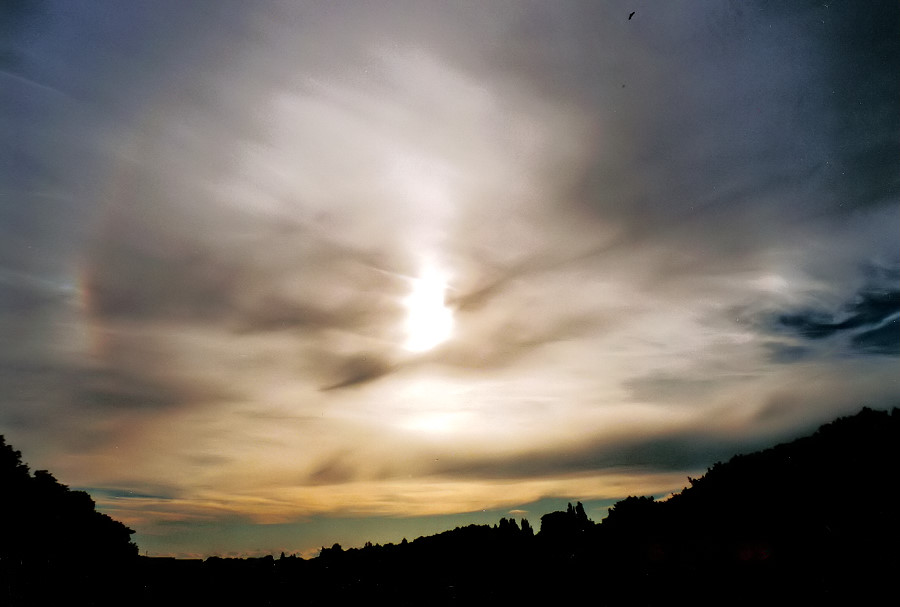
About a year ago in Muonio, Finland, a diamond dust display produced a new halo, the 46° contact arcs. The display was shortly
reported in the blog, but no simulation was shown. So here is a simulation, together with a composite of the photos that were taken by Päivi Linnansaari. The 46° contact arcs, which arise from Lowitz-oriented crystals, appear as three arcs below the circumzenith arc.
The Lowitz crystals used in the simulation are regular plate-like hexagons, with aspect ratio of 0.4, tilt about the Lowitz axis 28° and Lowitz axis rotation 1°. Sun elevation is 9°. The Lowitz arcs themselves are fainly visible at 10 and 2 o'clock positions, separating from the 22° halo and reaching towards the upper sunvex Parry arc. This is the circular component of the Lowitz arcs, also known as the c-component (after Greenler).

Occasionally, in high cloud displays there is seen a short patch of 46° halo under the circumzenith arc, as shown here in the photo by Stepanka Kosova, taken on 20 August in Prague. It has been sometimes suspected that these might be indications of 46° contact arcs. Whether that's the case, it may be confirmed if a series of photos are taken for stacking.
The simulation is made with
HaloSim by Les Cowley and Michael Schroeder.

 Today on 21st October at 11:27 local time I saw this elliptical halo above Vecsés, Hungary. I was photographing Ac len and iridescent Ac clouds, when I caught sight of the display. The elliptical halo formed on the ice crystal precipitation of one of the Ac. The display lasted less than two minutes, so I really had to hurry to find a good object to shield the Sun with, and not to miss the sight meanwhile. In the first photo - I was still using the neighbouring house's wall, - even the reddish inner side of the halo can be seen. More photos.
Today on 21st October at 11:27 local time I saw this elliptical halo above Vecsés, Hungary. I was photographing Ac len and iridescent Ac clouds, when I caught sight of the display. The elliptical halo formed on the ice crystal precipitation of one of the Ac. The display lasted less than two minutes, so I really had to hurry to find a good object to shield the Sun with, and not to miss the sight meanwhile. In the first photo - I was still using the neighbouring house's wall, - even the reddish inner side of the halo can be seen. More photos.












